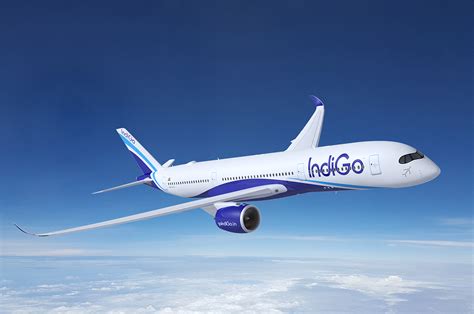Today Airbus had another first flight, this time the A350-1000. The aircraft looks good. A video from AirlineFlyer captured the moment from this morning’s takeoff.
It is exciting when a new aircraft enters the market. But what makes this aircraft special? Airbus provided this infographic.
 The A350XWB family consists of two models, the 325-seat A350-900 and the 366-seat A350-1000. Let’s take a look at the market as of 3Q16 to see what it looks like. The chart lists the models and average age in years for the segments.
The A350XWB family consists of two models, the 325-seat A350-900 and the 366-seat A350-1000. Let’s take a look at the market as of 3Q16 to see what it looks like. The chart lists the models and average age in years for the segments.
The Big Twin market is close to 1,400 aircraft, 246 of which are approaching replacement. Boeing claims the 787-9 seats 290 in a two class layout, but the more typical layout is for 270 seats, which puts it on the cusp of this segment. For example the United 787-9 seats 252 and the Virgin Atlantic version seats 264. Only Air Canada has 298 seats on its five 787-9s. The most popular model in the Big Twin segment is the A330-300 with 46% share, followed by the 777-200ER at 28%. All told, Airbus has 61% of this segment in service. Looking forward, Airbus offers the A330-900 and A350-900 in this segment. Boeing will offer the 787-9 and -10. The 787-9 is capable of more than 271 seats, we expect to see more of them located in the segment, replacing early 777s.
This means lessors and airlines are able to essentially pick between two approaches. Boeing offers all new high-tech aircraft. Airbus offers a high-tech solution and a mid-tech option. The latter will be the segment price leader which ensures orders (currently 176 firmed). The chart below from Airbus demonstrates their view of how Delta will deploy their orders.
Next let’s look at the Super Twin segment. Here we have 844 aircraft averaging 16 years old. Airbus is relatively weak in this segment, with only its 84 in service A340-600s compared to Boeing’s 676 777-300ERs, plus another 84 various Boeing models. Precisely because this segment is a Boeing stronghold, the A350-1000 is important to Airbus. The A350-1000 replaces the A340-600 and offers compelling economics. Airbus claims 366 seats and the 777-300ER typically seats 365. The largest 777-300ER operator, Emirates, seats 360 on its 777-300ERs.
Airbus has 195 orders from 11 customers for the A350-1000. Boeing’s revised 777X comes in two sizes. The -8 seats up to 375 and the -9 seats up to 425. These seat counts are on the high end, and are more likely to be around 350 and 400 respectively. Of the 306 orders Boeing has for the 777X, 53 are for the -8 and 253 are for the -9. The A350-1000 will compete directly with the 777-8. With 676 777-300ERs eventually to be replaced, Boeing should pick many more orders for the -8. In the meantime, what are current orders telling us?
 The data suggests the A350-1000 is indeed well placed to take a big slice of the Super Twin segment from Boeing. Airbus is outselling Boeing by nearly four to one. Note that only two customers have ordered both aircraft, and in those cases the Airbus outsells the Boeing by three to one. Boeing is going to win more orders, but is has fallen behind against the A350-1000.
The data suggests the A350-1000 is indeed well placed to take a big slice of the Super Twin segment from Boeing. Airbus is outselling Boeing by nearly four to one. Note that only two customers have ordered both aircraft, and in those cases the Airbus outsells the Boeing by three to one. Boeing is going to win more orders, but is has fallen behind against the A350-1000.
Meanwhile Boeing’s 777-9 opens a new part of the Super Twin segment with a 400 seater. With the market taking to the A350XWB, Airbus is apparently discussing an A350-2000 with key customers like Singapore Airlines. A “double-stretch” of the A350XWB brings challenges, such as a revised engine. Boeing has 253 orders for its 777-9. The customers for this model are, as expected, highly influential airline brands. But the 777-9 is some way off, maybe coming to the market close to slightly after 2020. Airbus has time to tweak its ideas for a double-stretch A350.
In the meantime, Airbus claims the A350-1000 is 20 tons lighter and 25% more fuel efficient than the 777-300ER. The 777-300ER has proven to be a winner for Boeing and is often referred to as the benchmark longhaul passenger aircraft. The A350-1000 serves notice that its reign is going to come to an end. That alone demonstrates how important today’s first flight is. The A350-1000 is a crucial product for Airbus to capture a big share of the growing Super Twin segment.
Views: 1







QR put 283 total seats in their A359s and eight of the first ten A35K are marked for QR with 327 total seats. CX put 280 seats in their A359s and will get the other two of the first ten A35K. Assuming these relationships are maintained, the CX A35Ks will only have ~325 seats. These will be “Big Twins” as your diagram above defines this segment, and the 787-10 is expected to be much more cost effective for stage lengths up to ~6200 nm. It will be quite some time before the average A35K in-service unit is actually configured as a “Super Twin.”
Good point. Seat counts are tough because they are all over the place – look at the 787-9 and how Air Canada’s fall into a different category. The seat counts we have are best estimates based on OEM numbers. Airlines inevitably change these.
I understand that Airbus is definitely leading the order race over Boeing, but I still think Boeing is a superior aircraft mechanically, and technologically. Airbus joystick stick design played a pivotal role in several crashes including Air France 447. Boeing also fly much better. I think part of the reason Airbus is leading the orders race is due to poor management decisions at Boeing. Such as the discontinuance of the 757, which is what the Airbus 350 is. Also the delay in improvements to the 747, regardless that it has 4 engines. There was delayed improvements that would have made it just as fuel efficient as anything already in the skies. Also most pilots that I talk to prefer Boeing. Just so happen they are not the ones making the decisions on which aircraft to buy
Further examination of the “super twin” examples listed above reveals that the only “twins” that fit the seat count definition are the 773/77W. The 77W is now routinely delivered in (or converted to) “super twin” layout. A35K EIS is expected in 2017 but it will be well into 2018 (or even 2019) before UA gets one that MIGHT be configured as a “super twin.”
Perhaps a derivative observation/prognostication is useful: the only model that will actually be routinely, even exclusively, configured as a “super twin” (as defined here) will be the 779. Assuming 779 EIS is in 2020, it is far from obvious if, let alone when, a 2K variant of the A350 will be in serial production and in service to compete in that group.
Your thesis is that Airbus needs the A35K to have a product that competes for the high-seat count 773/77W replacement market and for the “quad” replacement opportunities, as well. Agreed. The likely reality is Boeing will retain dominance in the “super twin” space.
It should also be noted that the Delta info graphic shown above is a little misleading in terms of deriving an Airbus market position or direction. UA is purchasing the new 78x from Boeing because it is already dominant in carrying passengers to Asia. Delta is very weak in this market. Therefore, the “emerging markets” for Delta are already mature for United. So the A350 deriviatives make sense for a Delta “emerging market” story, but not for another carrier that already provides full coverage of the market. UA won’t need the A350 for it’s emerging market, but there are too many seats. Truly emerging markets seem to be well fed by the 787. It’s the right blend of long passage, thin demand, good cargo capacity.
Summary: the 787 will allow Boeing to increase share of the Big Twin market; as NCPx pointed out, the A350 will indeed allow Airbus to increase its share of the Super Twin market. Good time to have choices!
This article and associated graphics seem slanted toward Airbus. The cut-off at 400 seats for the “supertwin” market conveniently leaves out Boeing’s primary replacement aircraft for the 777-300ER. Boeing has bet that most current 777 customers will trade up to the 777-9 rather than stay with the -8 or the A350-1000. Right now -9 has a substantial order advantage over the -1000. Time will tell which manufacturer is correct, but saying that the -1000 has an order advantage over the 777-8, while leaving out the 777-9, presents a misleading picture.
The A350-1000 and B777-8 do not compete in exactly the same market. The only similarity between the 2 is the similar seat counts. Comparing them and their sales is like comparing the A340-300 to the B777-200LR or the A330-300 to the B777-200ER. Even though all these aircraft are within splitting hairs of each other as far as pax capacity is concerned, they do not come very close when you factor in payload-range capability.
In the end, there is a market for all these aircraft.
The A350-900 is doing very very well and will continue on this path of prosperity, likewise for the B787-9.
The B787-10 will pick up eventually as soon as Boeing can prove its abilities are not too compromised by its engines and thrust, and small-ish wing compared to the comparably sized A350-900.
The A350-1000 and B777-9 have a huge market to take advantage of and in the end should split it in half between them. We should not forget that many airlines configure their large B777-300ER fleets at 10-abreast and this bodes well for the B777-9.
The B777-8 is in the ULH A340-500 and B777-200LR market. It will be much, much, much more efficient and offer more capacity (which helps) but it was, is and always will be a niche aircraft unless it defies the laws of physics or by some miracle comes out way better than even Boeing expect.